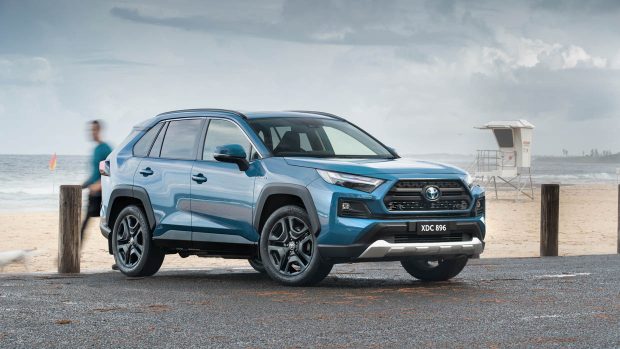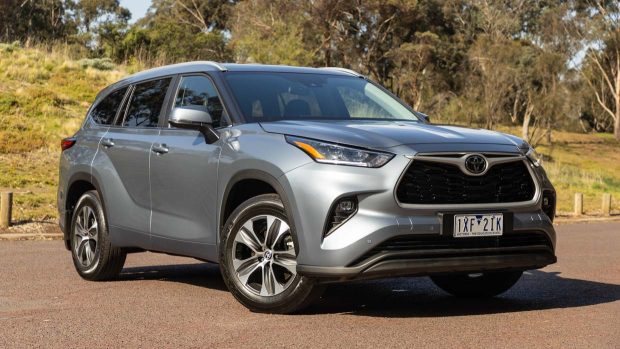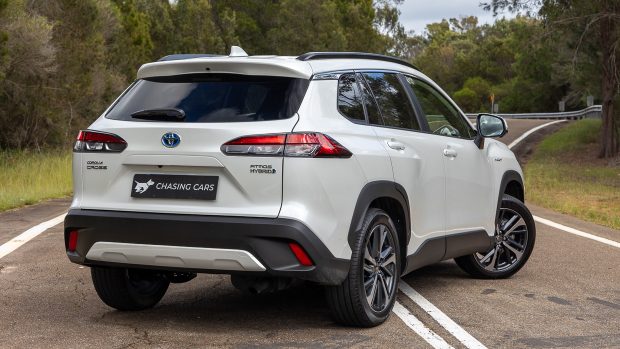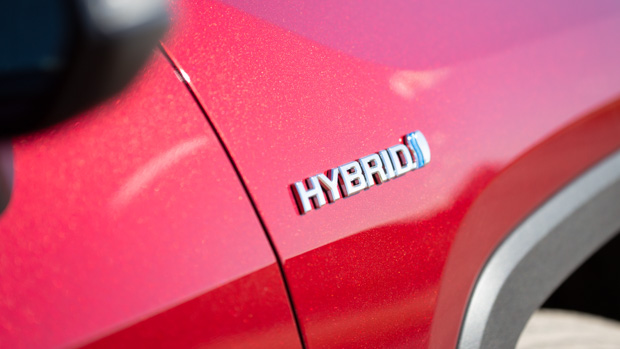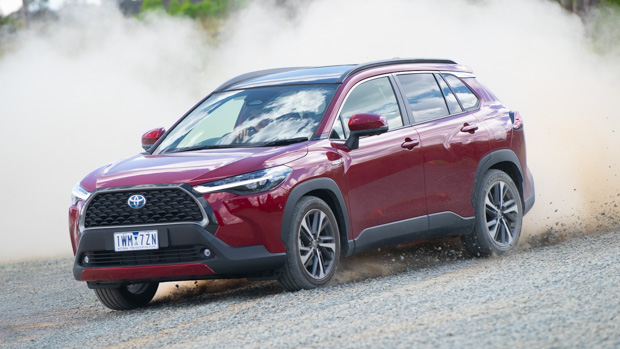-
Car Reviews
- All reviews
- Midsize SUVs
- Small cars
- Utes
- Small SUVs
- Large SUVs
- Large cars
- Sports SUVs
- Sports cars
- Vans
Latest reviews
- Car News
-
Car Comparisons
Latest comparisons
- Chasing Deals
None of Toyota’s passenger cars or SUVs will offer a petrol engine, with non-hybrid power now exclusively reserved for sports cars and models with diesel power
Toyota today made further cuts to its non-hybrid combustion engine lineup in Australia by announcing that wherever a hybrid engine is available, the company will no longer offer a non-hybrid, petrol-engine alternative.
Sean Hanley, Toyota Australia vice president of sales and marketing, told media that the move reflected a clear and growing preference for hybrid over petrol-only engines.
But it will mean that the cost of entry to purchase certain Toyota models jumps as the brand will not adjust the price of the remaining hybrid models downward to counter the loss of price-leading petrols.
The decision does not apply to non-hybrid diesel engines, leaving diesel vehicles such as the Hilux, Fortuner, Prado, and Land Cruiser 300 Series unaffected by the move.
What it means in practice is that the popular RAV4 midsize SUV, Corolla Cross small SUV and Kluger large SUV will no longer be capable of being ordered with a non-hybrid petrol engine.
The cost of entry to these vehicles will jump by between $2500 and $6500 – and while hybrid engines reduce spend at the bowser, it will take customers years to make up the difference financially.
Toyota Australia had already abandoned non-hybrid petrol engines on the Yaris small car, Yaris Cross small SUV, Corolla small car and Camry sedan.
“This will accelerate the sales trend that has seen customers increasingly choose hybrid vehicles,” said Hanley. “It is a demand curve that Toyota has anticipated and has encouraged.”
The decision bolsters Toyota’s capacity to meet Australian new vehicle emissions standards (NVES) that commence in mid-2025. NVES laws will financially penalise carmakers for breaching an average CO2 limit that averages the emissions of all vehicles sold by a manufacturer in a given year.
Every vehicle sold beneath the NVES CO2 limit effectively creates breathing room for a manufacturer to also sell a vehicle that emits too much CO2 without facing a penalty when the figures are averaged.
Hybrid versions of the Corolla Cross, RAV4 and Kluger produce 97g/km, 107g/km and 128g/km respectively – drops of 29 percent, 22 percent and 33 percent compared to the discontinued non-hybrids. Those emissions are far lower than the 205g/km produced by a Hilux Rogue with 48-volt mild-hybrid tech.
In 2025, CO2 emissions limit thresholds will be set at 141g/km for most passenger cars and SUVs, and 210g/km for most utes and 4WDs, but these figures tighten to 117g/km and 180g/km just one year later.
“This is not a result of the impending NVES. It is a trend in the market now,” said Hanley. “In fact, the new mandated standard confirms the foresight of Toyota’s strategy. We will do even more in the coming years to innovate across a diverse array of drivetrains.”
It’s nearly certain that Toyota will need to make similar decisions to drop diesel-only engines in future if the NVES penalty regime remains in force as its four-wheel drive and ute models may breach the overall limit to a degree Toyota’s hybrid passenger cars can’t make up for in the accounting process.
There is still some stock en route to Australia of the aforementioned models with petrol engines. Stock will generally run out in 2024, though Toyota expects petrol-only Kluger stock to be exhausted in 2025.
The Corolla Cross line previously opened with a front-wheel-drive petrol with 126kW (from $33,980 before on-road costs in GX form). The new base grade will be the GX front-drive hybrid, making 146kW, at a price of $36,480 – up $2500, or seven percent.
Claimed fuel consumption falls from 6.0L/100km to 4.3L/100km between the Corolla Cross petrol and hybrid. At a petrol cost of $2.00/litre and 15,000km driven annually, breakeven would be achieved in just under five years.
In the case of the RAV4, the price jump is also $2500, with the cost of entry shifting from the 127kW GX 2.0-litre petrol ($39,760) to the 160kW 2.5-litre hybrid ($42,260) – but with a shallower fuel economy gain of 6.0L/100km to 4.7L/100km, breakeven is six years away.
Kluger customers will face the harshest jump as the existing 198kW 2.4-litre turbo petrol engine is offered in cost-saving front-wheel-drive format or with AWD, while the 184kW 2.5-litre non-turbo hybrid is AWD-only.
As a result, Kluger cost of entry leaps from $54,420 to $60,920 ($6500, or 12 percent). Fuel consumption drops from 8.3L/100km to 5.6L/100km, but the breakeven time is still lengthy at eight years.
“We understand that petrol-only models have been the price leaders,” said Hanley. “Even so, what is important to understand is that across models where customers have had the choice, the vast majority have chosen hybrid over petrol.”
Residual values on Toyota hybrids have traditionally been stronger than petrol versions of the same car.
Latest news
About Chasing cars
Chasing Cars reviews are 100% independent.
Because we are powered by Budget Direct Insurance, we don’t receive advertising or sales revenue from car manufacturers.
We’re truly independent – giving you Australia’s best car reviews.
